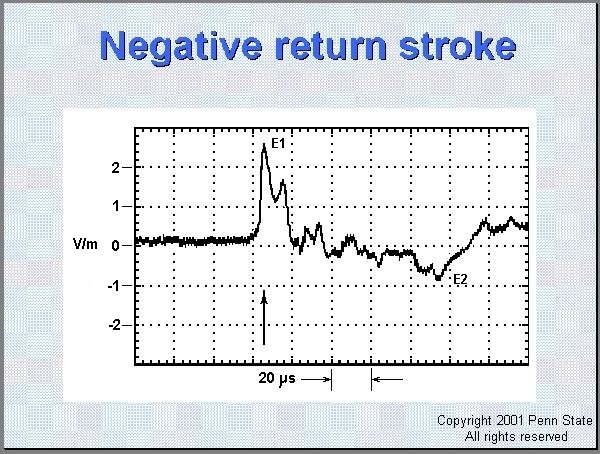




Accurate bearing determination
can best be accomplished by using only the cloud-ground return stroke signals,
and so we need a reliable method for rejecting the intracloud signals.
Intracloud strokes lead to phase distortions and ambiguous bearings at
a remote receiver because their radiated fields have frequent horizontal
components and so are propagated along multiple paths of ionospheric reflections (sky wave)
and surface waves. In contrast, vertical return strokes, whose propagation
is largely confined to surface waves, are propagated along this shortest
single path. Use of the broadband, gated
technique along with software analysis accomplishes the required discrimination.
Fortunately the wave forms of intracloud
strokes are usually quite distinct from those produced by return strokes.
The intracloud wave form is usually biphasic (some prefer the term bipolar) showing a very large overshoot
(E2) of reversed polarity following the initial excursion (E1). In contrast,
return strokes tend to be monophasic (or monopolar), in that there is a relatively small
overshoot following the initial wave component. These rather distinct signatures
allow software sorting of the two stroke types and selection of only the
return stroke for locating purposes.

